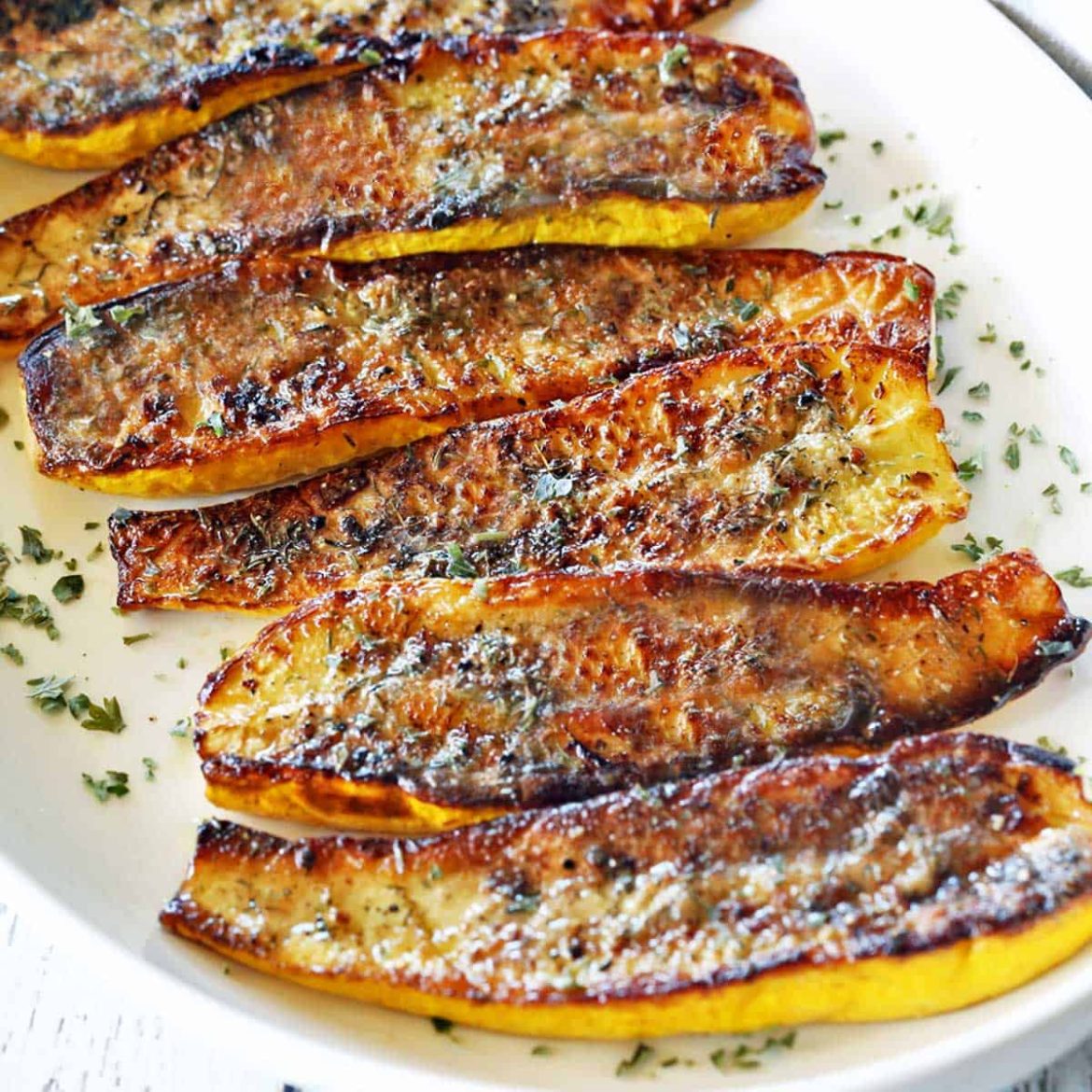To make perfectly roasted yellow squash, salt it to draw out water, quickly pan-fry it, then finish it in the oven.
Your reward: intensely flavorful, deeply caramelized squash that tastes great when freshly roasted and just as good as cold leftovers.
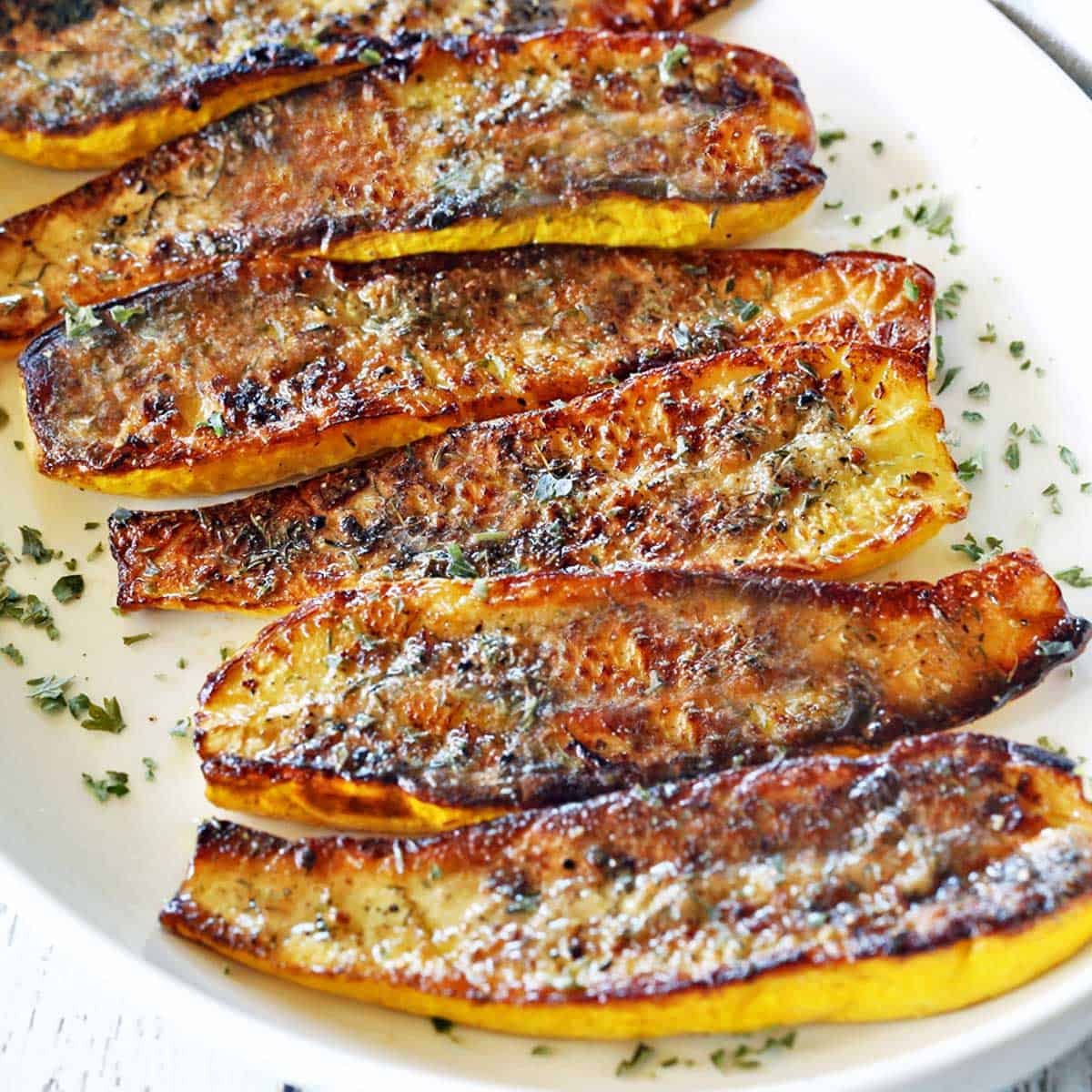
The first time I made roasted zucchini using Chef Thomas Keller’s method, I knew immediately that I would apply the same method to squash and eggplant.
Despite being a multi-step method, I don’t think I’ll ever roast these vegetables any other way. This roasted yellow squash is absolutely perfect. The extra steps of salting and pan-frying it are worth the superb result.
Jump to:
Ingredients
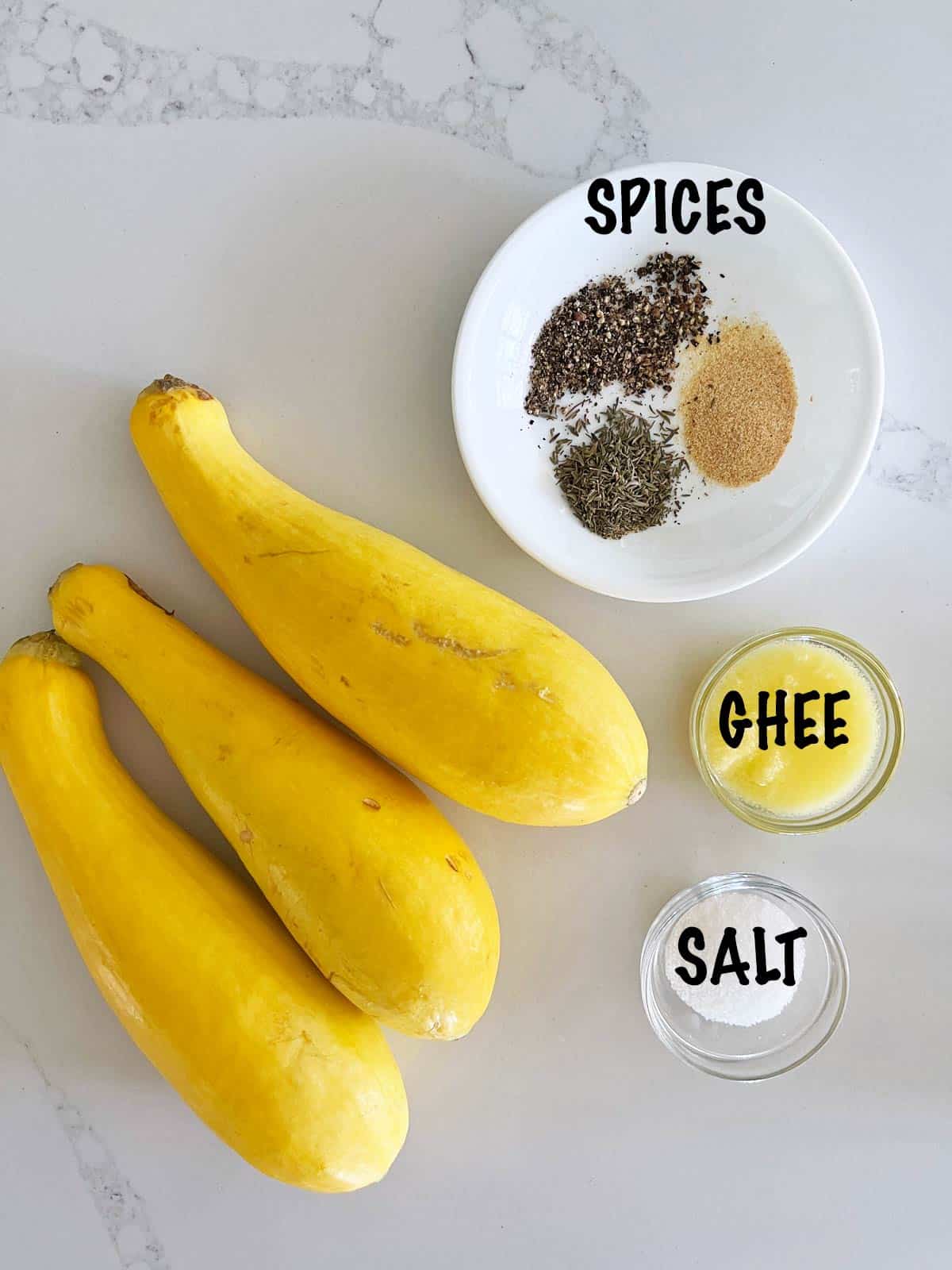

Here’s a look at the ingredients needed to make this recipe. The exact measurements are listed in the recipe card below.
- Yellow squash: We will use three medium squashes in this recipe. Trim their ends, but leave them unpeeled.
- Kosher salt: Used to draw water out of the squash.
- Ghee: Used for sauteing the squash before roasting it.
- To season: Black pepper, garlic powder, and dried thyme.
Variations
- You can use avocado oil or refined coconut oil instead of ghee.
- Vary your spices. I love sprinkling the squash with chili powder and smoked paprika.
- You can sprinkle the squash with dry-grated parmesan cheese before placing it in the oven.
Instructions
Here’s an overview of the steps needed to make this roasted yellow squash. The detailed instructions are listed in the recipe card below.
Cut each squash in half lengthwise. Make shallow cuts in a crosshatch pattern on the flesh side.


Sprinkle the squash with salt and let it rest for 15 minutes. After 15 minutes, the squash will have visible water droplets on its surface. Pat it dry using paper towels.


In a large, 12-inch, oven-safe skillet, heat the ghee over medium-high heat. Place the squash in the skillet in a single layer, flesh side down.
Cook the squash for about 5 minutes, until the bottom is browned. Turn the heat off. Flip the squash. Sprinkle it with black pepper, garlic powder, and dried thyme.


Transfer the skillet to a 450°F preheated oven. Roast the squash until tender, for about 20 minutes. Serve immediately.


Expert Tip
I’m a big advocate of the three-step method outlined here because it leads to perfect results. But if you’re feeling lazy, you can simply roast the squash in the oven and skip salting and pan-frying it. Its texture will be soggy, but its flavor will be excellent.
I experimented and roasted the squash in the photo below in a 425°F oven for 20 minutes per side. I didn’t salt it beforehand. I simply halved it lengthwise, sprayed it with a generous amount of olive oil on both sides, seasoned it with salt, black pepper, and garlic powder, and roasted it.
It was delicious! But its texture was soggy because I skipped salting it. Additionally, it wasn’t as caramelized as when I took the extra step of sauteing it before roasting.
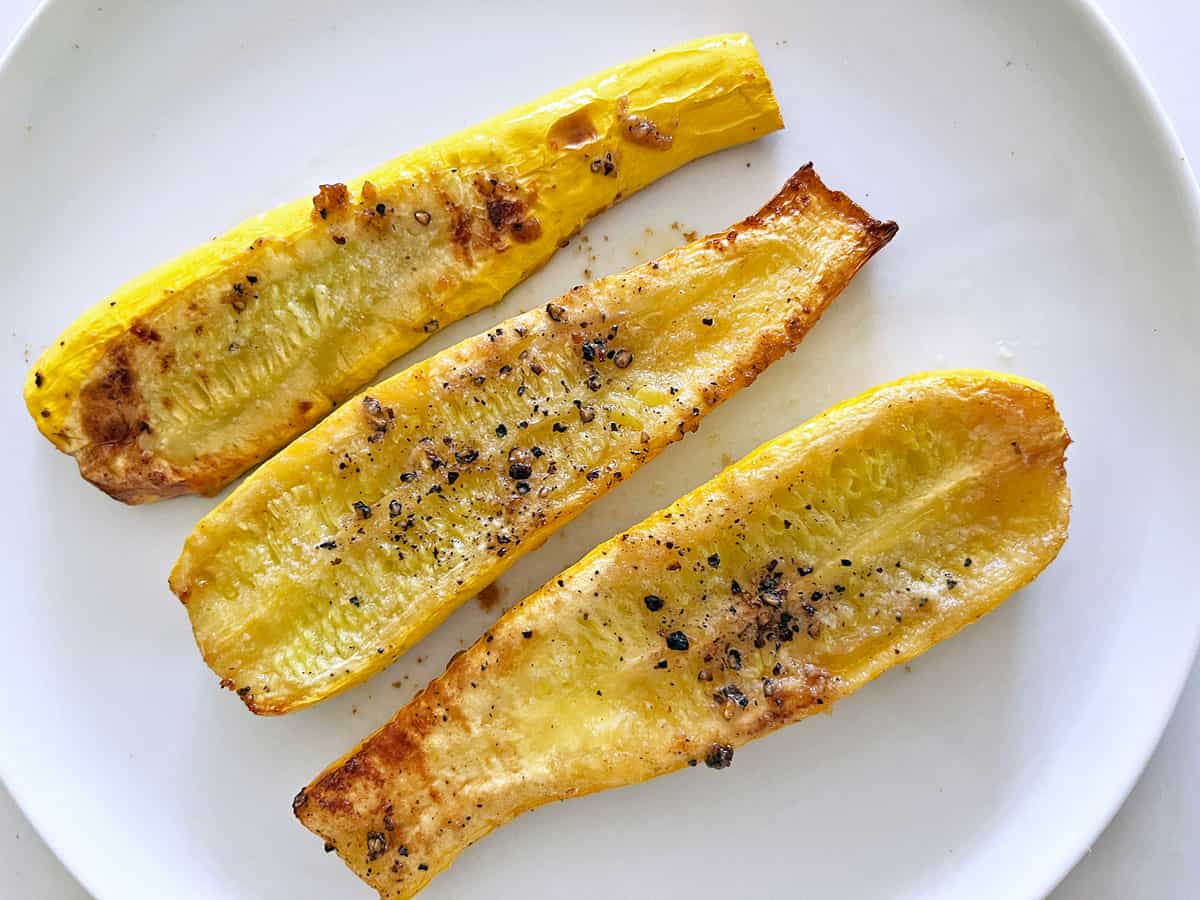

Recipe FAQs
Salting removes excess water, preventing the roasted squash from being soggy. Look at these water droplets on the squash after it’s been salted – it’s important to remove that excess water for optimal results:
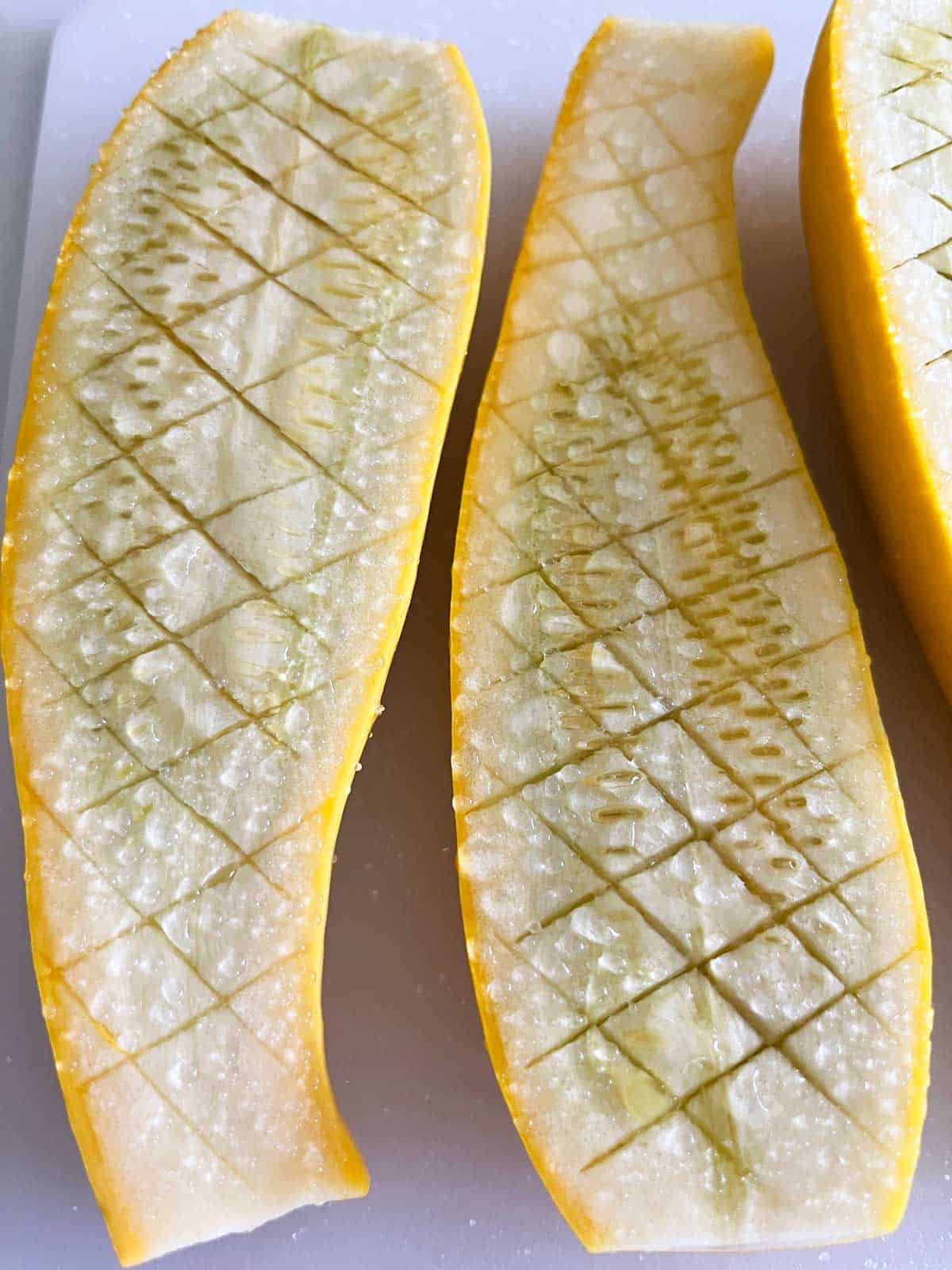

No. Butternut squash is a winter squash, while yellow squash is a summer squash. Their texture is different. Yellow squash has a far higher water content and less dense flesh. Butternut squash doesn’t need to be salted, but it does need to be peeled – its skin is thick and fibrous. Here’s a good recipe for roasted butternut squash.
There’s no need to peel yellow squash, just as there’s no need to peel zucchini. Summer squash skin is thin, edible, and not too fibrous.
To prevent the squash from being soggy, score its flesh, salt it, and let it stand for at least 15 minutes to draw water out, then pat it dry with paper towels. Scoring its flesh helps the salt penetrate it. Salting draws excess water out.
Serving Suggestions
Since I bake the squash in a 450°F oven, I like to serve it with a main dish that I can cook in the same oven, such as:
Storing Leftovers
You can keep the leftovers in the fridge, in an airtight container, for up to 4 days. They are excellent when served cold, like antipasti. If you’d like to reheat them, do so in the microwave, covered, at 50% power. I don’t recommend freezing the leftovers.
The photo below demonstrates how I typically store the leftovers in a glass food storage container. I made roasted peppers and roasted onions simultaneously, so I stored them all together:
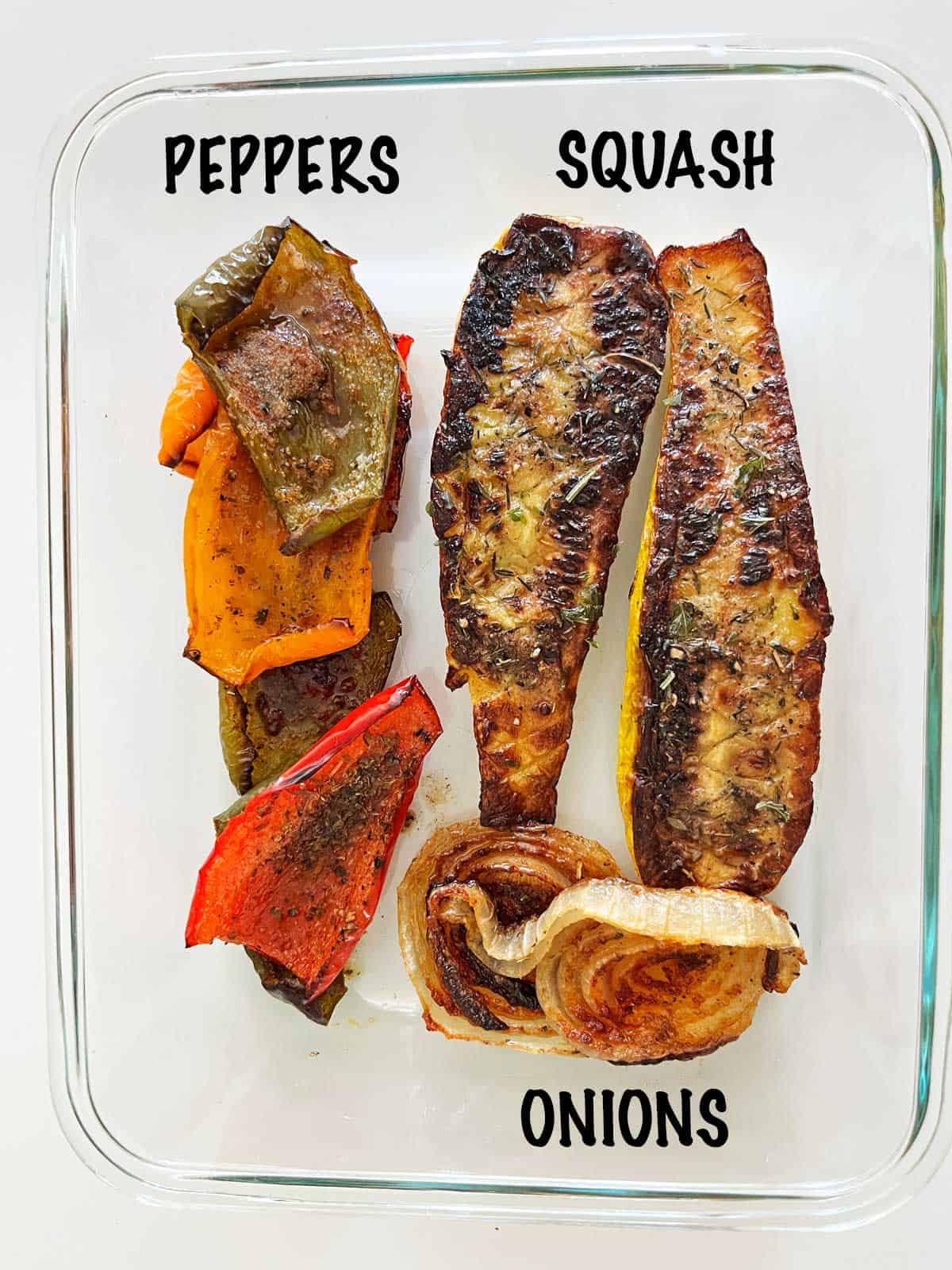

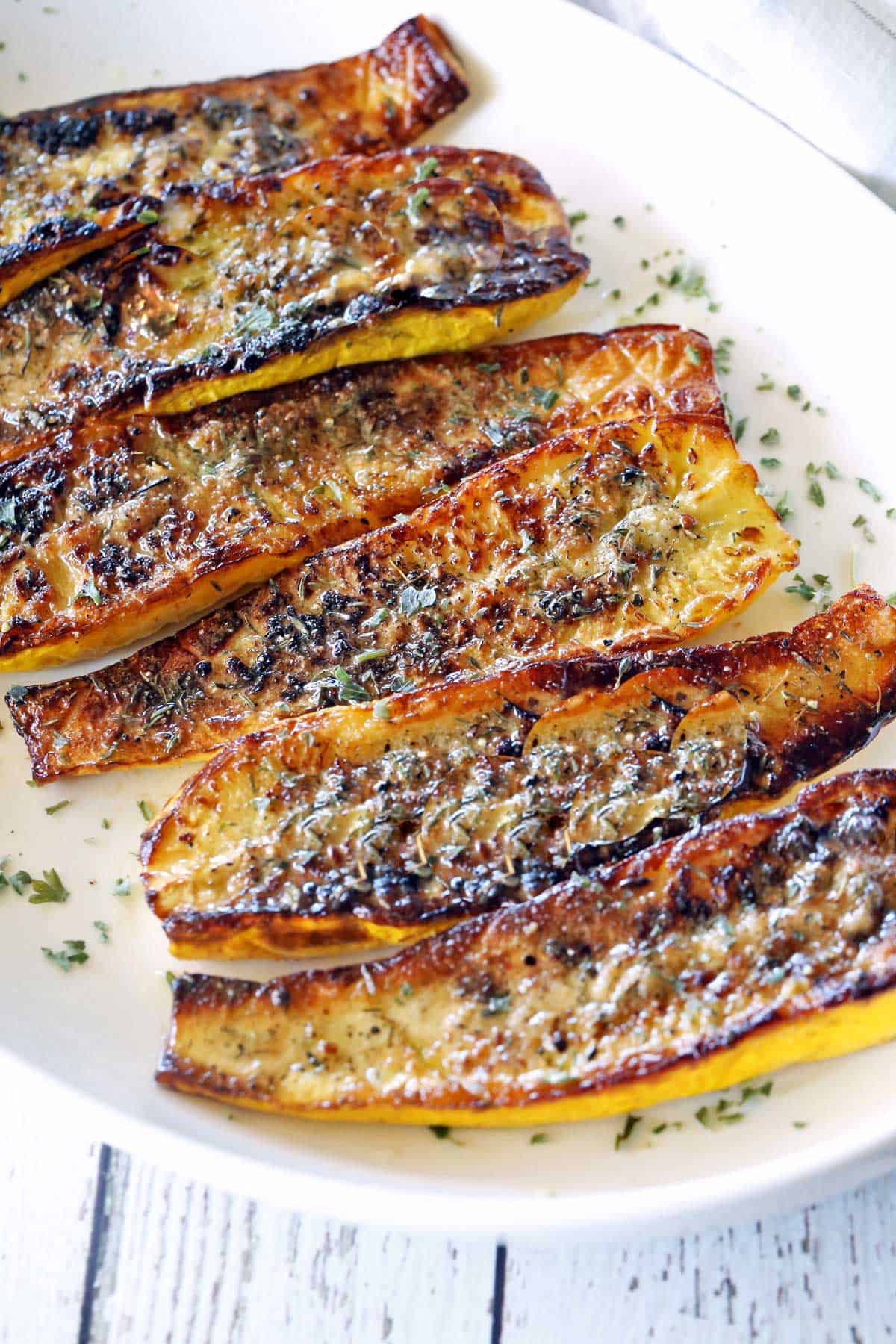

More Squash Recipes
Foodie Newsletter
I send out a weekly newsletter with a recipe and tips. Want these recipes in your inbox? Subscribe today! You can unsubscribe at any time.
Recipe Card
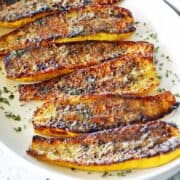

Save this RecipeSaved!
Pin Recipe
Share on Facebook
Print Recipe
Roasted Yellow Squash
To make perfectly roasted yellow squash, salt it to draw water out, pan-fry it, then finish it in the oven.
Servings: 3 servings
Calories: 78kcal
Prevent your screen from going dark
Instructions
-
Cut each squash in half lengthwise. Make shallow cuts in a crosshatch pattern on the flesh side. Sprinkle 1 teaspoon of kosher salt over the flesh and let it rest for 15 minutes. The salt will draw water out. The crosshatch pattern helps the salt penetrate the squash.
-
After 15 minutes, the squash will have visible water droplets on its surface. Pat it dry using paper towels.
-
Preheat the oven to 450°F.
-
In a large, 12-inch, oven-safe skillet, heat the ghee over medium-high heat. I use a cast-iron skillet.
-
Place the squash in the skillet in a single layer, flesh side down. Cook the squash for about 5 minutes, until the bottom is browned. If the pan becomes too hot, reduce the heat to medium.
-
Turn the heat off. Flip the squash. Sprinkle it with black pepper, garlic powder, and dried thyme.
-
Transfer the skillet to the preheated oven.
-
Roast the squash for about about 20 minutes, until tender. Serve immediately.
Notes
- Scoring and salting the squash flesh eliminates extra liquid, helps the squash caramelize, and prevents sogginess.
- Even though we pat the squash dry after salting it, enough salt gets inside thanks to the scoring that there’s no need to add more salt.
- Squashes and ovens vary. You’ll need to check and ensure that the squash is cooked through, tender, and browned.
- You can keep the leftovers in the fridge, in an airtight container, for up to 4 days. They are excellent when served cold, like antipasti. Alternatively, you can reheat them in the microwave at 50% power. I don’t recommend freezing the leftovers.
- The nutrition info assumes that about half the salt remains in the dish after blotting the squash dry.
Nutrition per Serving
Serving: 1 squash | Calories: 78 kcal | Carbohydrates: 7 g | Protein: 3 g | Fat: 5 g | Saturated Fat: 3 g | Sodium: 191 mg | Fiber: 2 g | Sugar: 4 g
Disclaimers
Cup measurements refer to the standard American cup, which is 240 milliliters. Most of my recipes are low-carb (or keto) and gluten-free, but some are not. Please verify that a recipe fits your needs before using it. Recommended and linked products are not guaranteed to be gluten-free. Nutrition info is approximate, and the carb count excludes non-nutritive sweeteners. Nutrition info may contain errors, so please verify it independently. Recipes may contain errors, so please use your common sense when following them. Please read these Terms of Use carefully before using any of my recipes.

